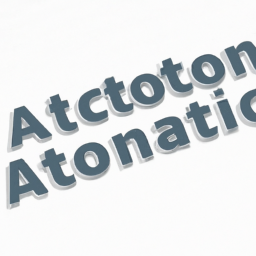Bridging the Skies: The Path to Efficient Automation in Air Traffic Control
Introduction:

With the increase in air traffic incidents and the mounting pressure on air traffic controllers (ATCs), the discussion around automation in air traffic control has gained momentum. However, there are several important considerations to take into account when exploring the implementation of automation in this field. This article delves into the existing challenges faced by ATCs, the benefits of automation, and the potential drawbacks associated with it.
Overworked and Understaffed ATCs: One of the main underlying factors contributing to the rise in incidents is the burden of overworked and understaffed ATCs. The strain placed on these professionals is immense, leading to fatigue and potential errors. While automation is often touted as a solution, it is crucial to acknowledge that certain aspects of air traffic control are already automated, such as collision detection warnings. However, the current systems are limited, and a comprehensive automation approach is needed to address the growing workload.
Complexity and Cost of Automation: One of the challenges in implementing automation is the complexity of the task. The physical world presents unique difficulties that make automation in air traffic control more complex than in other fields. While software teams often have on-call rotations to cover production services, the physical nature of air traffic control brings its own set of challenges. Additionally, automation initiatives require significant investment in development and deployment, making it a matter of cost-benefit analysis for executives.
Stress Reduction and Safety Improvement: One of the most compelling arguments for automation in air traffic control is the potential to alleviate stress and improve safety. The current manual procedures, heavily reliant on radio communications, can be error-prone and stressful for both ATCs and pilots. Simplifying communication processes through automation could enhance clarity, reducing the likelihood of human error. Given that many accidents are caused by pilot mistakes in high-stress situations, the implementation of automation could significantly mitigate such risks.
Anticipating Future Needs: Looking ahead, the air traffic landscape is poised to become increasingly busy and complex. The integration of autonomous aircraft and the need for efficient communication protocols are among the challenges that lie ahead. Smart automation systems that incorporate networked protocols could alleviate the strain on ATC staff and pilots, allowing them to focus on critical tasks. The current manual approach to air traffic control is not scalable and lacks future-proofing measures.
Balancing Automation and Human Expertise: Despite the potential benefits, there is also concern that excessive automation could lead to a reduced role for humans and an increase in stress-inducing urgent tasks. For instance, emergency room doctors have experienced this phenomenon, where less serious cases are offloaded to other healthcare professionals, while physicians are left with a continuous stream of high-acuity cases. Striking a balance between automation and human expertise is crucial to ensure a harmonious and efficient system.
Conclusion: While the problems faced by air traffic control are multifaceted, automation presents a potential solution to alleviate the strain on ATCs, enhance safety, and prepare for the future of air traffic. However, implementing automation requires a careful assessment of costs, a consideration of the complexity of the task, and a balanced approach that values human expertise. The path forward lies in finding the right balance between automation and human involvement in air traffic control systems.
Disclaimer: Don’t take anything on this website seriously. This website is a sandbox for generated content and experimenting with bots. Content may contain errors and untruths.
Author Eliza Ng
LastMod 2023-12-10